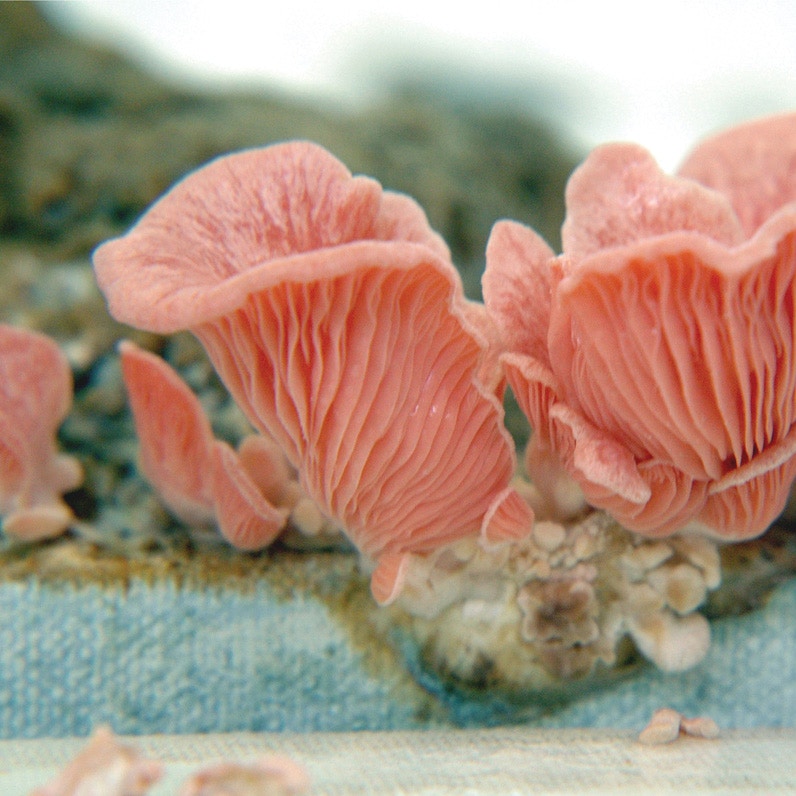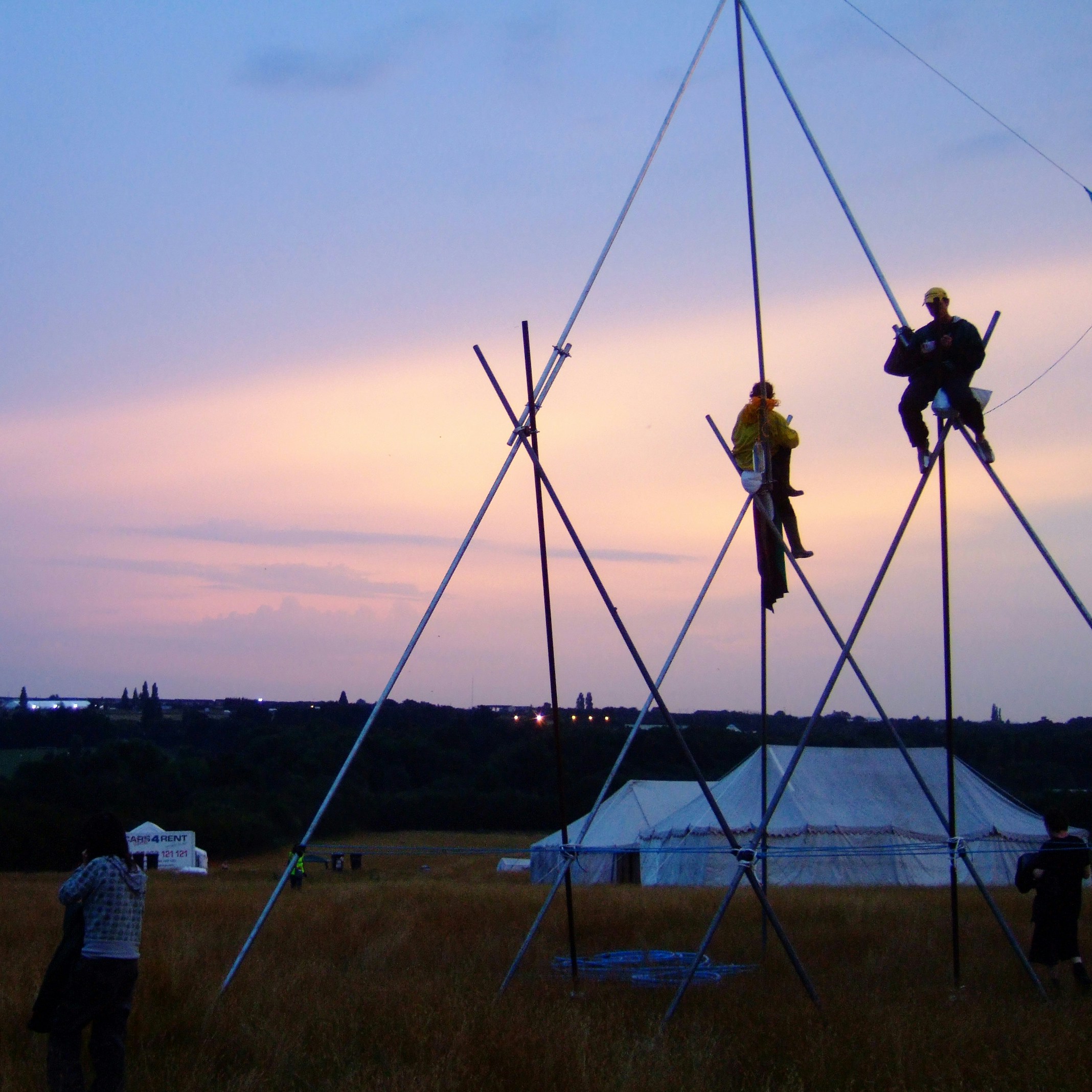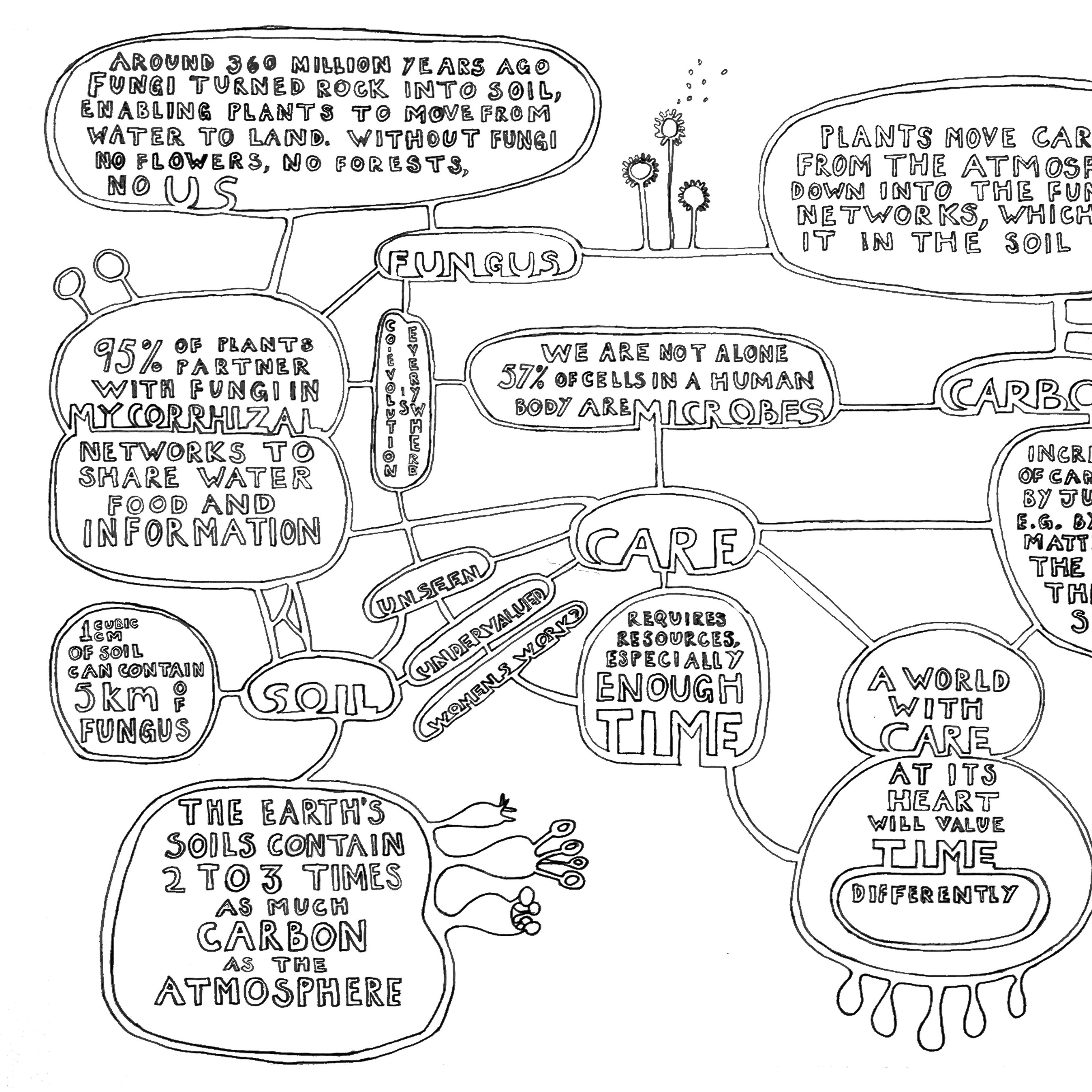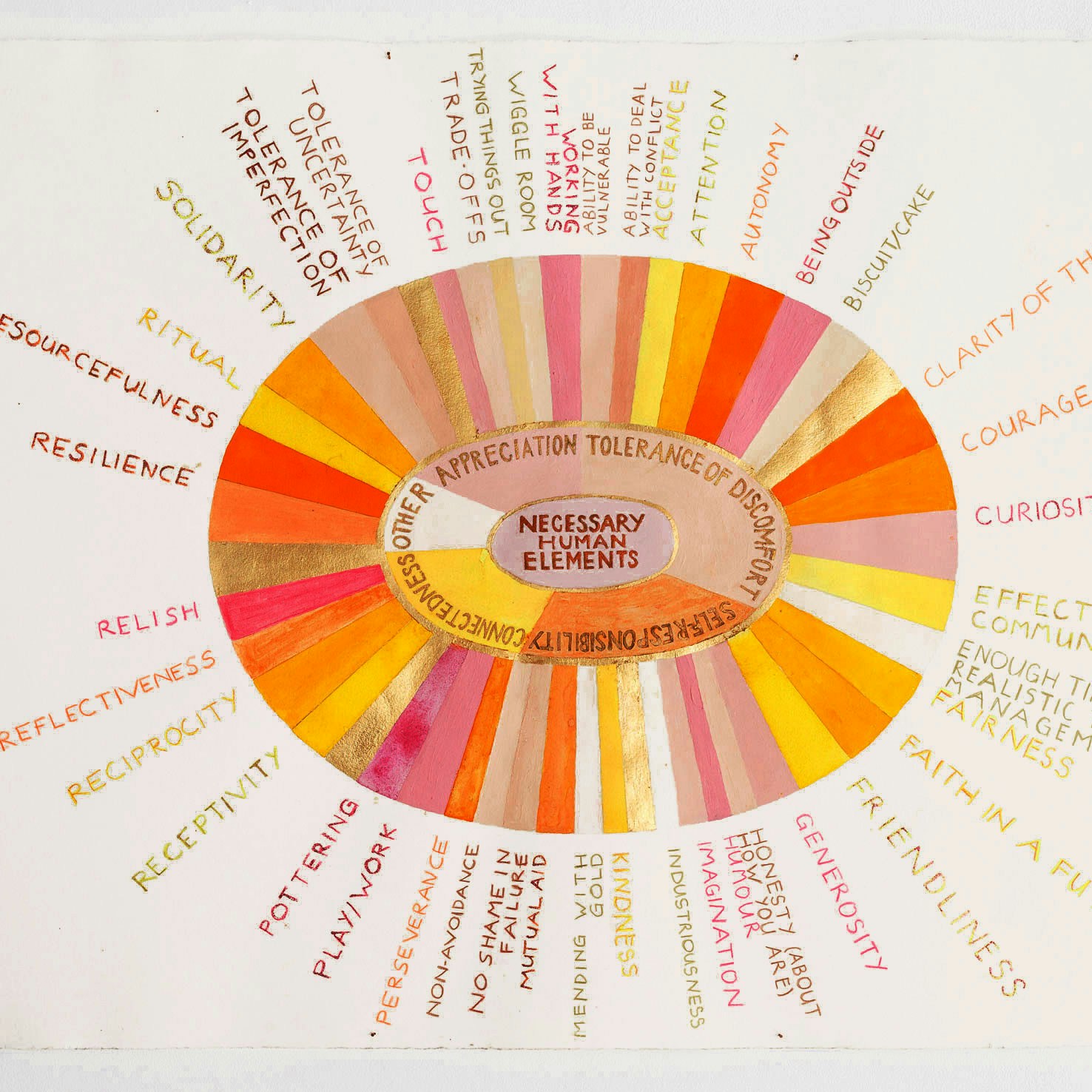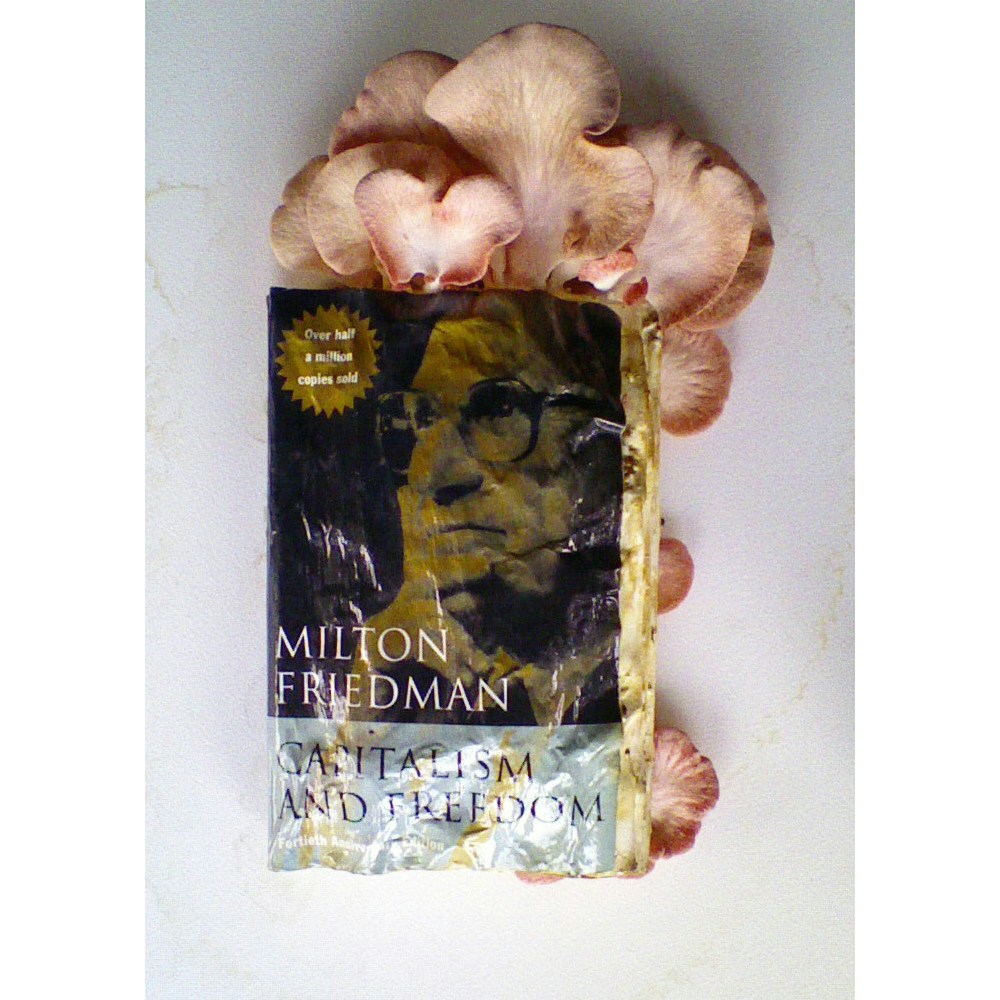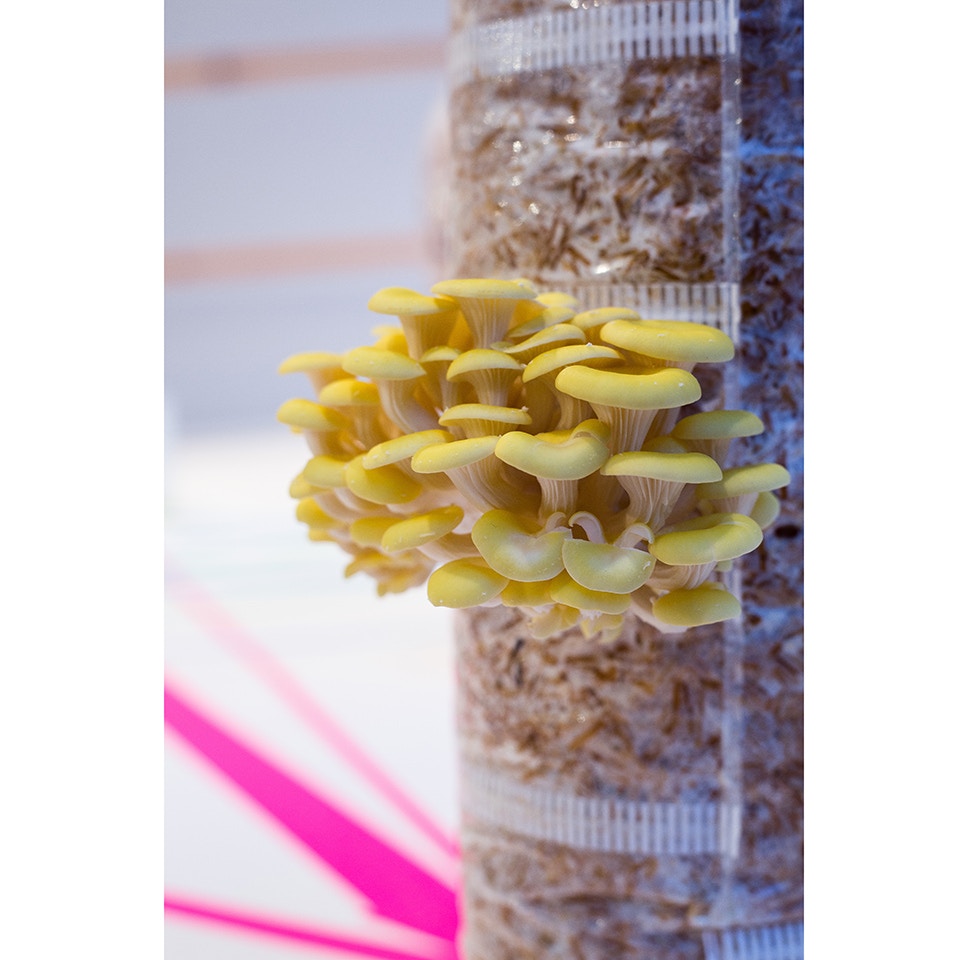アートと気候危機のいま vol.4 環境リーダー兼アーティスト、ジェーン・ローソンへのインタビュー(前編)
NPO法人アーツイニシアティヴトウキョウ [AIT/エイト]設立メンバーのひとりであり、TOTAL ARTS STUDIES(TAS) プログラム・ディレクター、ロジャー・マクドナルドによる、気候危機とアートについての不定期連載記事シリーズ。海外の動向の「いま」をわかりやすく紹介する連載の第4回は、マンチェスターを拠点に活動するアーティスト、ジェーン・ローソンへのインタビューをお届けする。*The English version is below the Japanese.
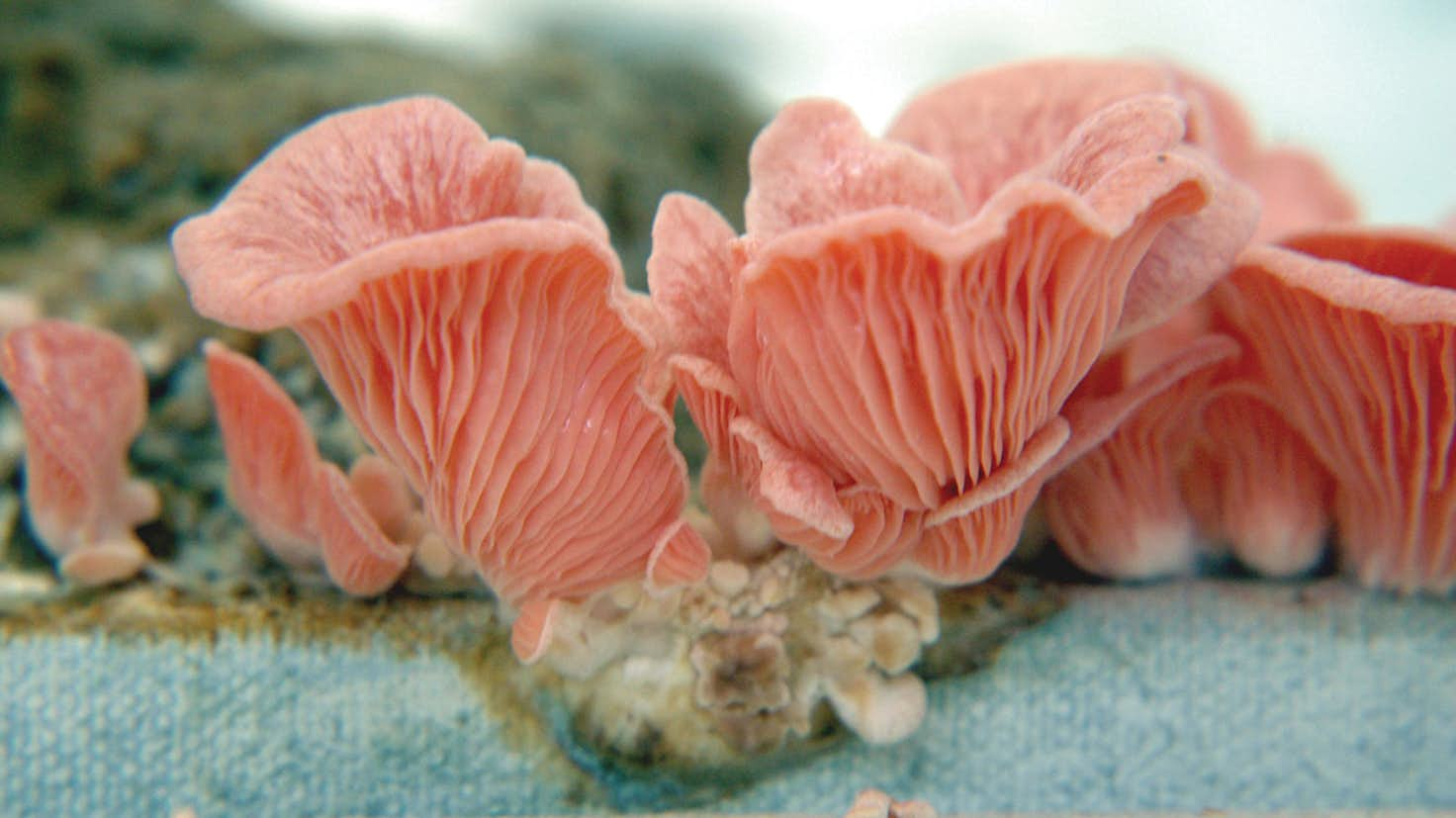
私たち人間の活動はいま、地球規模の視点で見たとき、どのような状況に置かれているのだろうか。英国出身アーティスト、ジェーン・ローソンによる「ダイアグラム(情報を図式や抽象的な図形で視覚的に表す方法)」作品シリーズは、それを淡々と、かつ端的に私たちに訴えかける。
この作品の発端は、自身が参加した気候変動対策キャンプ(地球環境への意識を高めるための集会)だった。世界の金融システム、地球の気候変動史、英国のEU離脱(ブレグジット)への道、民主主義に対するテクノロジーの影響など、人間社会を形成する経済的、歴史的、地理的、生物学的プロセスや構造を理解するために図式化されたものだ。
もともとフリーのニットウェアデザイナーとしてキャリアをスタートしたローソンは、大学で視覚芸術学を学び、ラディカルなアート/デザイン集団「UHC」の立ち上げや、英国における気候変動対策キャンプの草分けと言われている3つのキャンプにスタッフとして携わった経験があるほか、エシカル消費を牽引する雑誌で企業倫理に関するリサーチャーとしても奔走した。
その後、マンチェスターにある「キャッスルフィード・ギャラリー(Castlefield Gallery)」のコーディネーターを経て、現在は同ギャラリーでアーティスト兼、環境リーダーとして活動している。
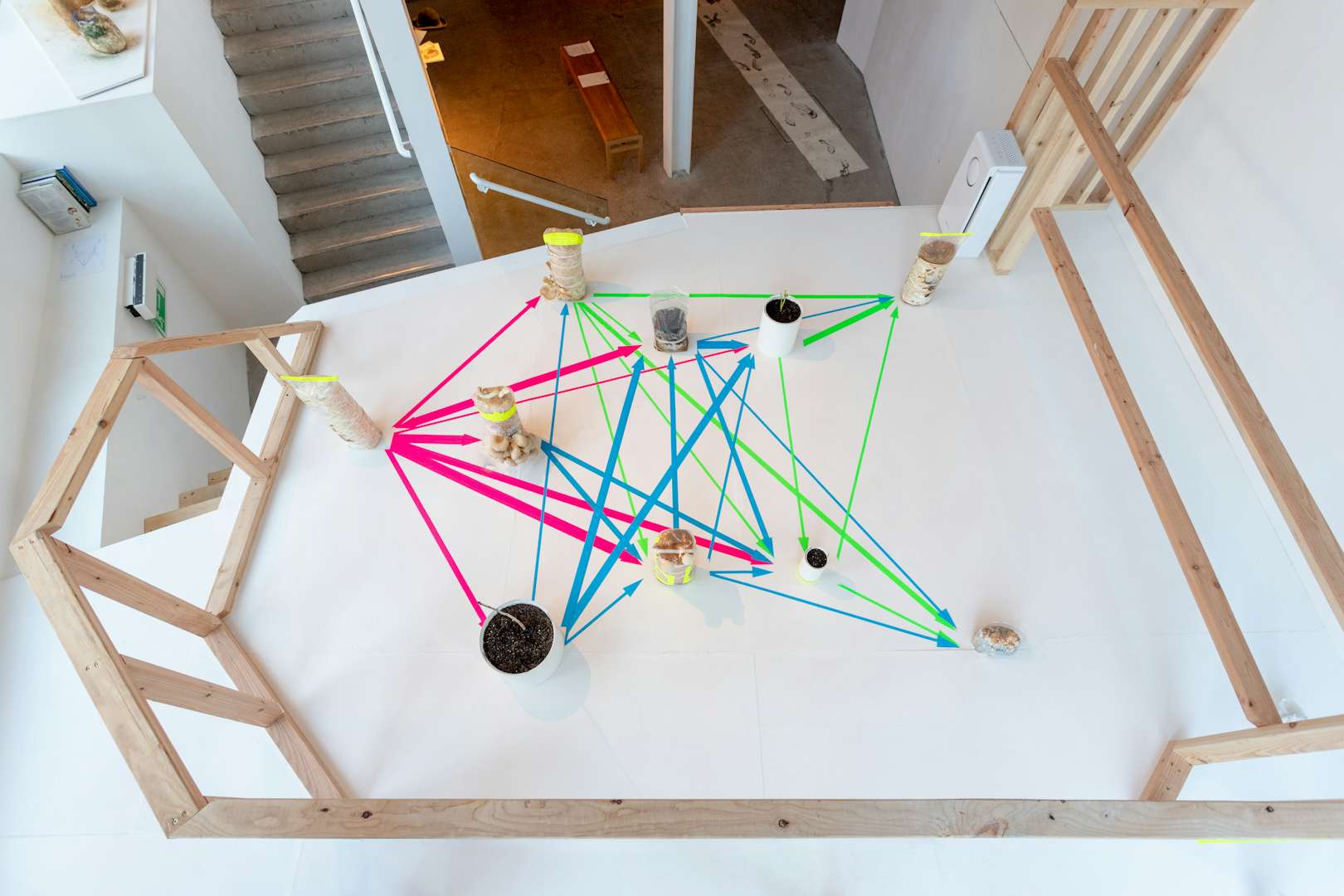
アーティスト活動の傍ら、気候危機にまつわるネットワークへの参加や立ち上げにも熱心だ。例えば、マンチェスター・アート・ギャラリーのコレクションをもとに気候正義(*1)に関する学びと行動を促すプロジェクト「クライメート・ジャスティス・ギャラリー(Climate Justice Gallery)」を共同企画したクライメート・ジャスティス・グループ(Climate Justice Group)の一員であり、キャッスルフィード・ギャラリー主催のプロジェクトでは、イギリス北西部を拠点に“低炭素アート”を実践するアーティスト・ネットワーク「SPARK」の設立にも関わった。
2022年、アート分野で環境課題に取り組む国際的ネットワーク「ギャラリー気候連合(Gallery Climate Coalition (GCC))」に、日本からは初となるメンバーに加わった我々AITにとっても、気候危機に問題意識を感じている日本のアーティストやギャラリスト、活動家とどう協働し、この地球規模の課題にアクションを起こせるのかを早急に考えていく必要がある。
そんななか、私は、英国でこの課題に対して精力的に活動するジェーン・ローソンに、改めてアートと気候危機の関係性についてどう考え、これからアーティストやアートセクターの人々とどのようなネットワークを築こうとしているのか、インタビューを行った。
作品は気候変動の構図を指す「図解」
──気候危機は、あなたの作品に何らかの影響を与えていると思いますか? 与えているとすれば、そのことをどのように感じていますか?
ジェーン・ローソン(以下、ローソン) 気候危機への問題意識は、私のほぼすべての作品の根幹をなしています。この原稿を書いている間にもグリーンランドの氷は急速に溶け、科学者たちは、地球環境が後戻りできない臨界点に近づいている、あるいはすでに手遅れかもしれないと言っています。
にもかかわらず、グラスゴーで開催されたCOP26(*2)以降、排出量削減計画を強化した国は、わずか26カ国。三大温室効果ガス(*3)の排出量は、2021年に過去最高を記録し、石油会社は過去最高の利益を報告しています。
私は、2009年に再びアートシーンに戻ったのですが、それ以前は英国で開催された3つの気候変動対策キャンプを運営する大勢のスタッフのひとりでした。このキャンプは、抗議キャンプとサマースクール、エコビレッジを掛け合わせたもので、英国での初開催は2006年。無政府主義で個々の自由な意思を尊重するという、おおむねアナーキストの原則にもとづいて運営されていました。最初のキャンプでは、英国でもっとも二酸化炭素を排出するヨークシャーの「ドラックス発電所」を占拠、次のキャンプでは「ヒースロー空港」の第3滑走路建設に反対する地元のキャンペーンに参加、3回目は「キングスノース発電所」を拠点に、英国で30年ぶりに建設される予定だったエネルギー会社、「エーオン・UK(Aon UK)」による新たな石炭火力発電所の建設計画に焦点を当てました。
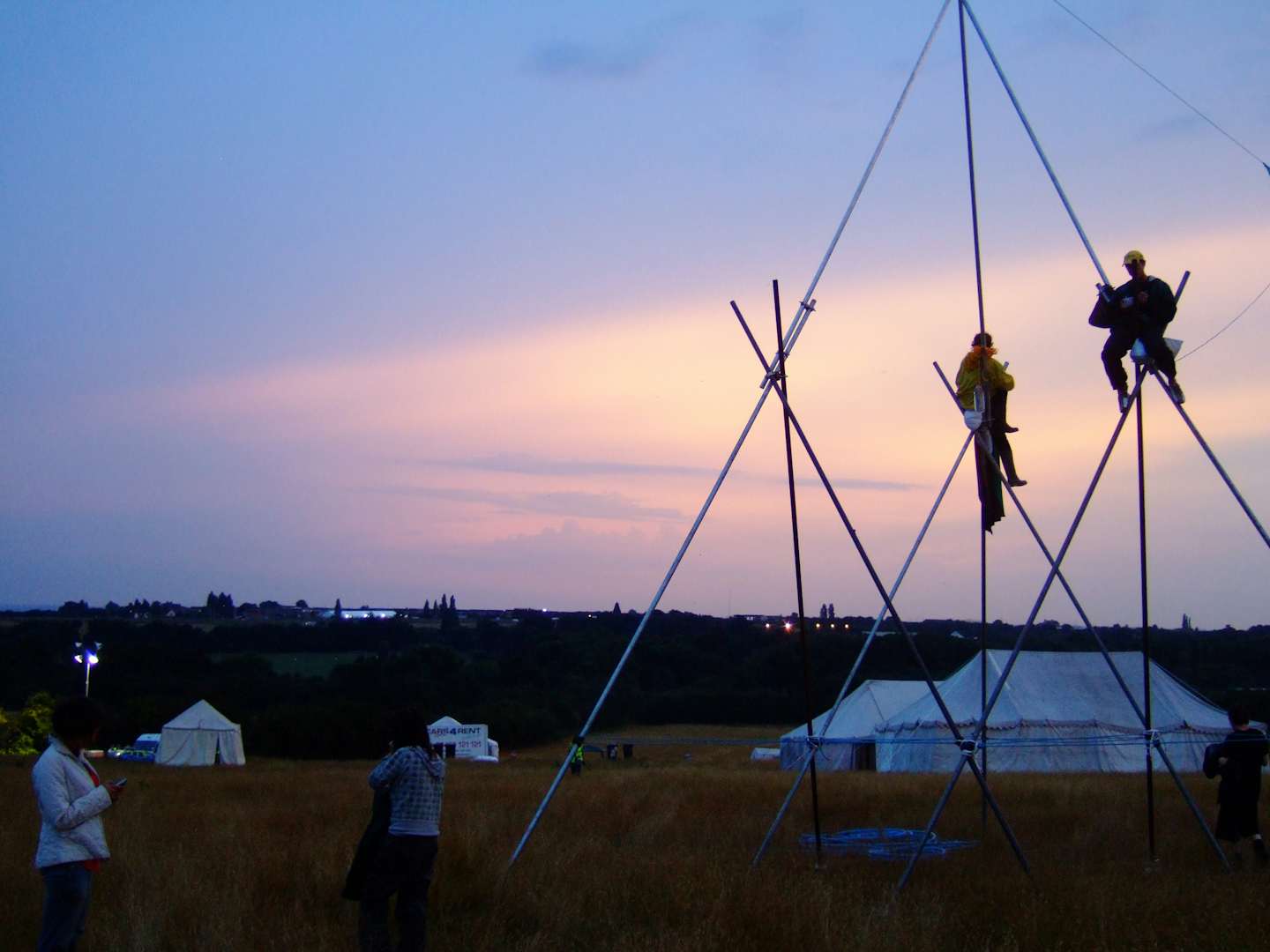
これらのキャンプは、功を奏したものとそうでないものがありました。ドラックス発電所は英国で最大の二酸化炭素排出源となり続けていますが、ヒースロー空港の拡張計画は棚上げとなり、キングスノースの新たな発電所建設計画は中止されました。こうした英国の気候変動対策キャンプから派生したのが、2009年にフランスのブルターニュ地方ノートル=ダム=デ=ランドの新空港建設予定地で行われた気候変動対策キャンプです。この空港建設に対する抵抗運動は成功し、長い闘争の末、2018年に計画中止が発表されました。破壊される予定だった4000エーカー(東京ドーム約346個分)におよぶ森林や農地、湿地帯は守られ、現在は美しくも複雑な実験の共有地となっています(こうした運動はフランスで、守るべき土地を意味する「ZAD」として知られる)。
私が様々な場面で一緒に仕事をしてきた活動家とアーティスト集団によるアクション「ラボラトリー・オブ・インサレクション・イマジネーション(Laboratory of Insurrectionary Imagination)」 の美学と抵抗、創造的な実験の精神はあらゆる場所や規模で広がっていったのです。
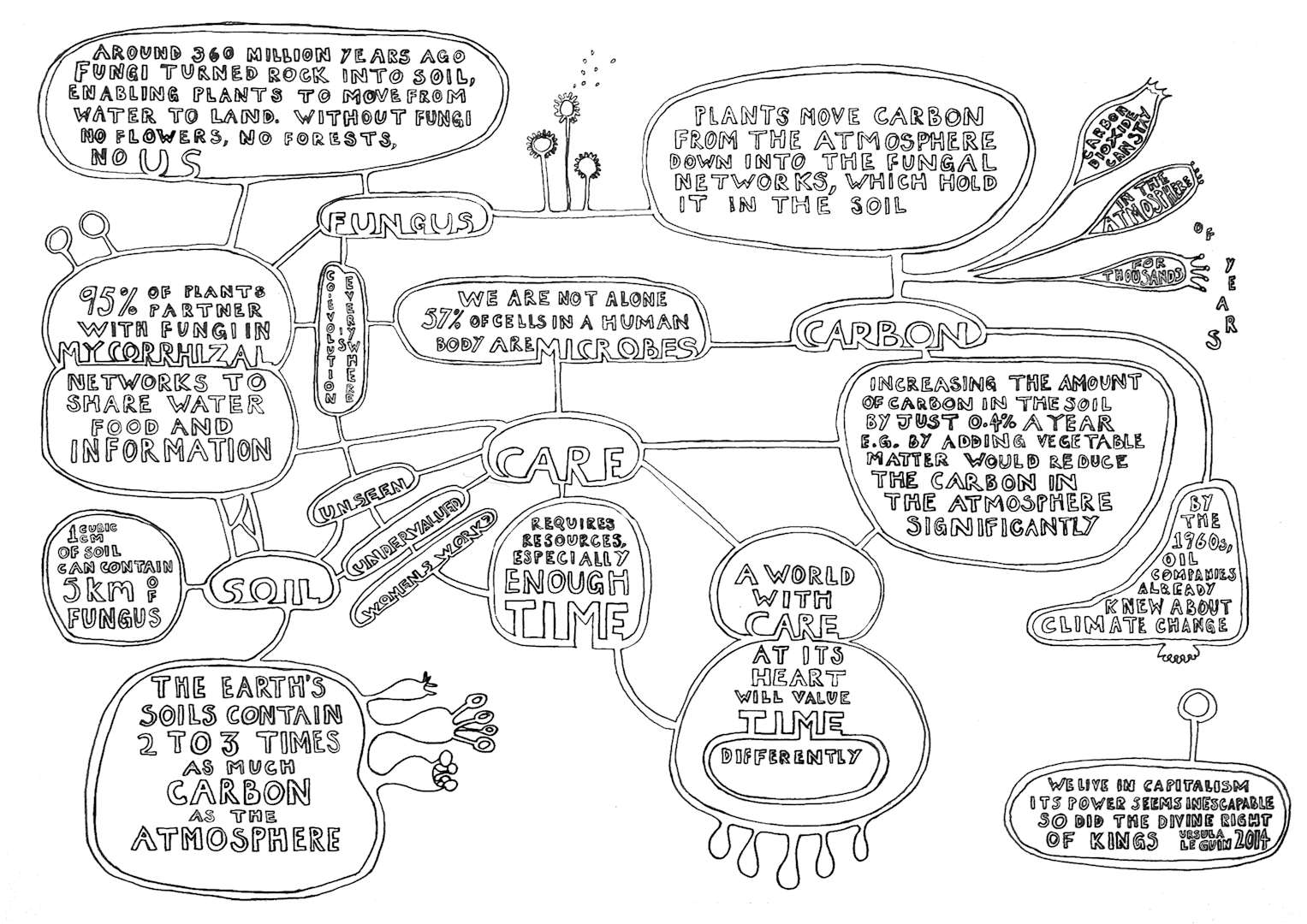
私は、資本主義の継続的な成長のための資源採取が、気候危機を招く大きな原因であると考えています。私の作品の多くは、物事がなぜそうなっているのか、どうすれば違うものになるのかを理解するための図解です。2008年の金融危機“リーマン・ショック”に至った経緯、私たちが“ポスト・トゥルース”の世界に暮らすようになった経緯、英国がブレグジットに投票するようになった経緯、そして地球の気候変動史を時系列で表したものなど。そうした時勢一つひとつのプロセスを理解し、その学びを多くの人々と共有するために、これらのタイムラインを作成するのです。私が最初に手がけた大型年表は、「キングスノース・クライメート・キャンプ(Kingsnorth Climate Camp)」のために、氷河期後の人類の社会的・技術的発展を、二酸化炭素排出量と気温に照らし合わせてマッピングしたものでした。
私はいつも、自分の作品が“もうひとつの可能性”(オルタナティブ)を具現化するものでありたいと思っています。資本主義リアリズム(*4)は、資本主義とそれに付随する個人主義が、(欠点はあるものの)私たちの唯一の現実的な選択肢です(非常に西洋中心の視点であることは理解していますが、残念ながら西洋の個人主義の経済・金融文化をいますぐ変えることはできません)。
私たち市民は、その時々の状況に順応して、すぐに過去のことを忘れてしまいます。英国でもかつては国営の公共事業があり、無料の大学教育があり、救急車を11時間も待つ必要のない医療サービスが機能していて、フルタイムで働いていてもなお、給付金を申請したりフードバンクに行かなければならないレベルの低所得者層など存在しなかった時代があったことを、すでに忘れつつあるのです。いまのやり方が昔からそうであったかのように、これが“あたり前”だと思いがちです。だから、すでに起こっている、あるいは起こりうることに対して、“もうひとつの可能性”を提示することが重要なのです。
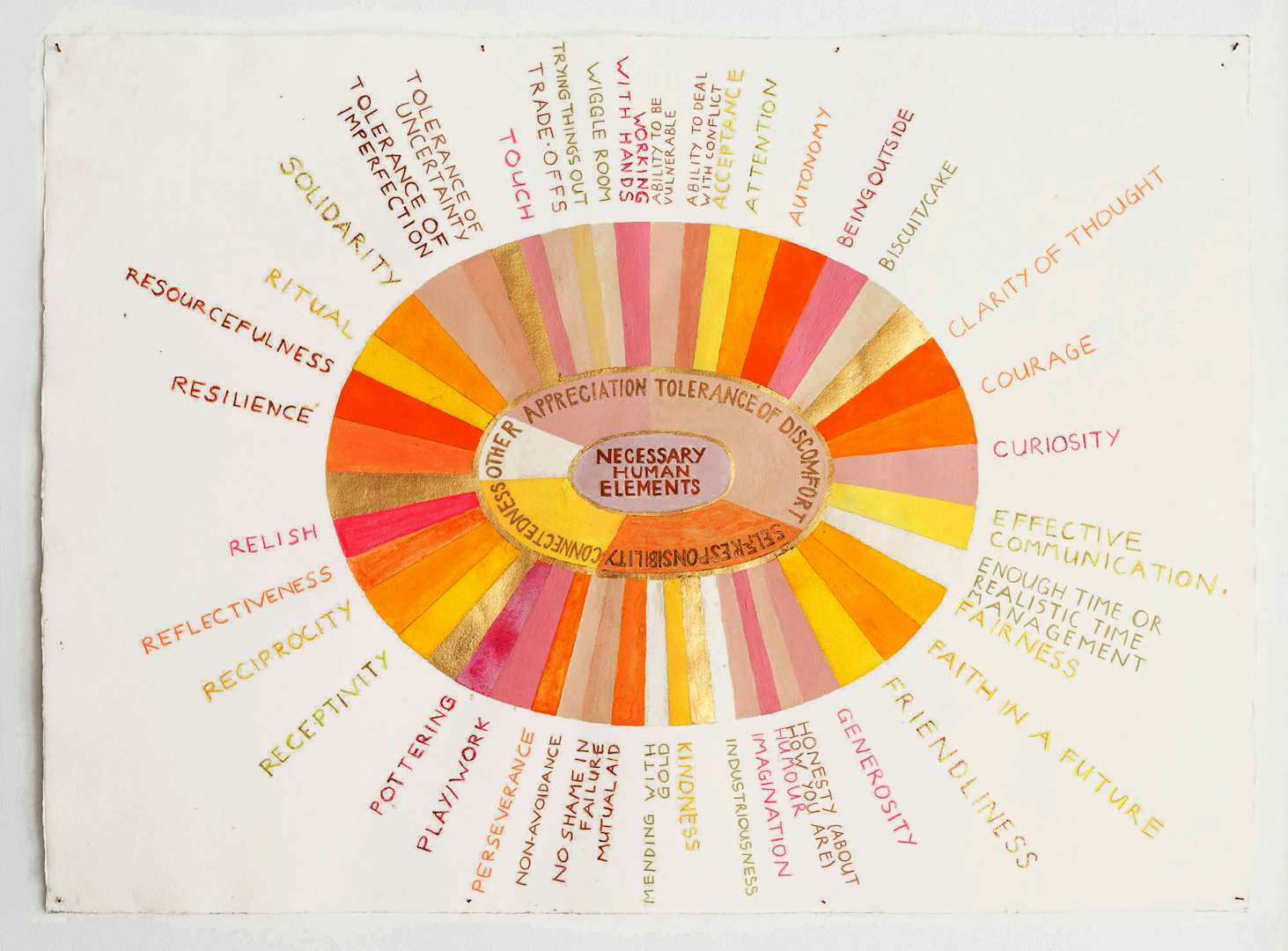
微生物をも含む生物への眼差し
2016年に行ったキュレーションプロジェクト「セカンド・ディグリー・ポテンティア(Second Degree Potentias)」では、「ポテンティア」(「ポテンシャル」のラテン語)という考え方をテーマとしました。その定義は「人類の繁栄と環境の持続可能性を優先する社会組織の形」。ここで言う「繁栄」には、微生物に至るまで、人間以外の生物すべてが含まれます。ユートピア思想のようでもありますが、この考え方は現在のリアリティに根ざしており、ここからポテンティアな未来へと向かう道筋の可能性を提示しているのです。この定義自体、まだ人間中心的すぎるとは思いますが、ポテンティアという思想のもとでは、生物学的に人間ではないとされている生きものすべてが、それぞれの利益のために繁栄していくのです。
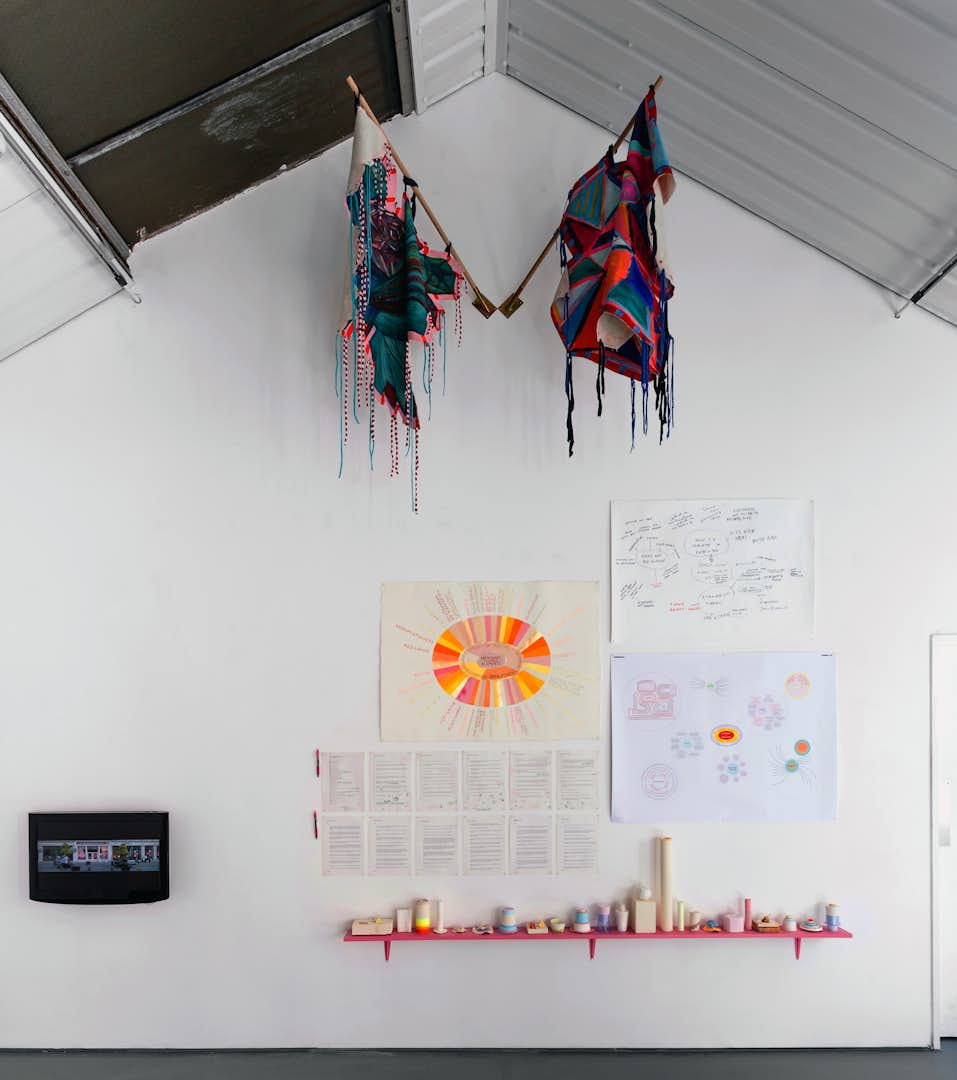
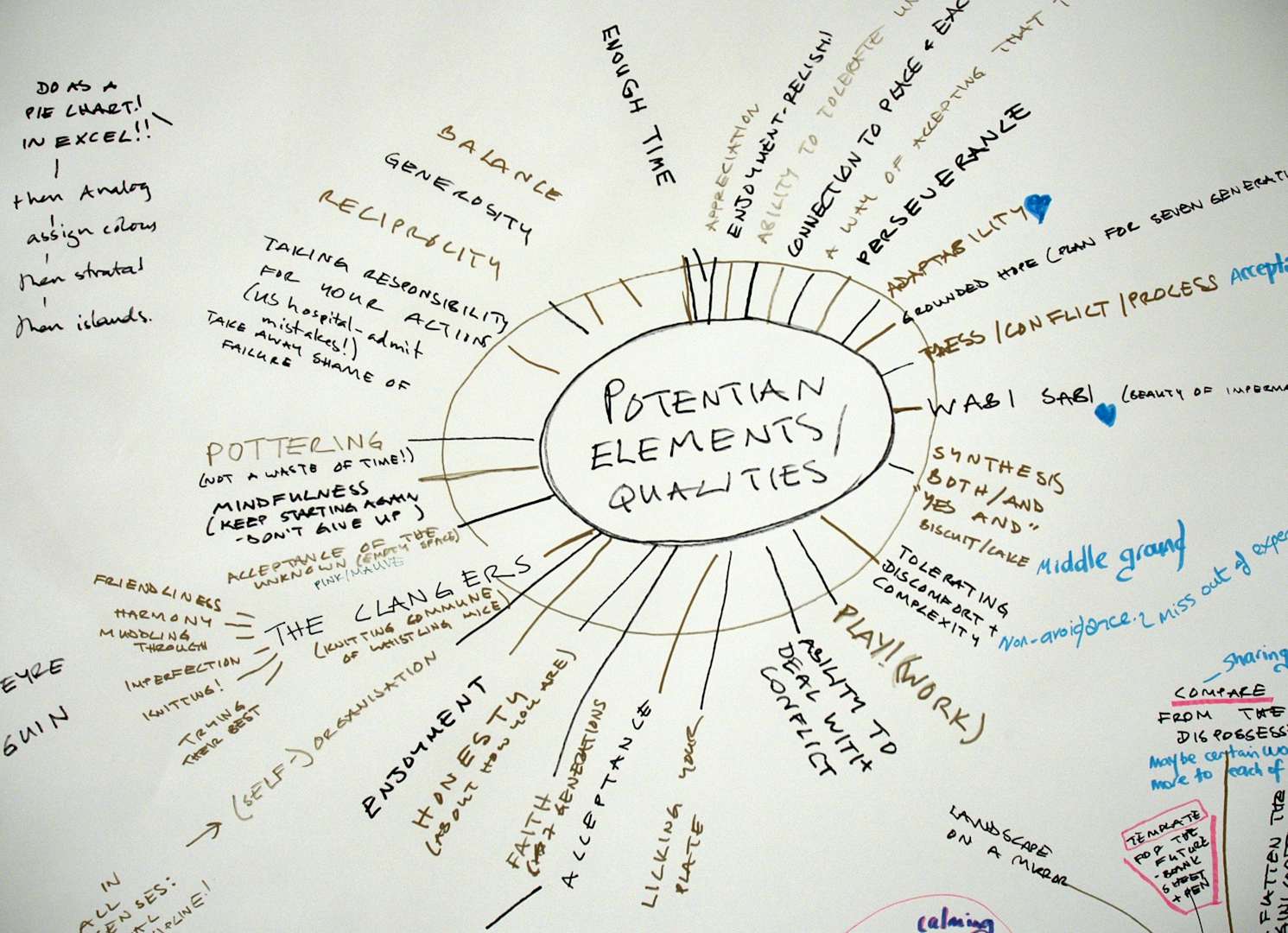
とくに、私が作品に菌類をよく扱うのは、「ラディカル・マイコロジー(草の根的な菌類学)」の理念に沿って、菌類の非常に回復力の高いライフサイクルや自然界との相互作用に触れることで、人間同士や私たちの住む世界とのよりよいかかわり方を学ぶことができると信じているからです。また、菌類は非常に美しく魅力的でありながら、私たちが直面している多くの環境問題にソリューションを提供してくれます。そのひとつの例を挙げるとすれば、近年発見され、注目を集めている「プラスチックを分解することができる菌類」です。
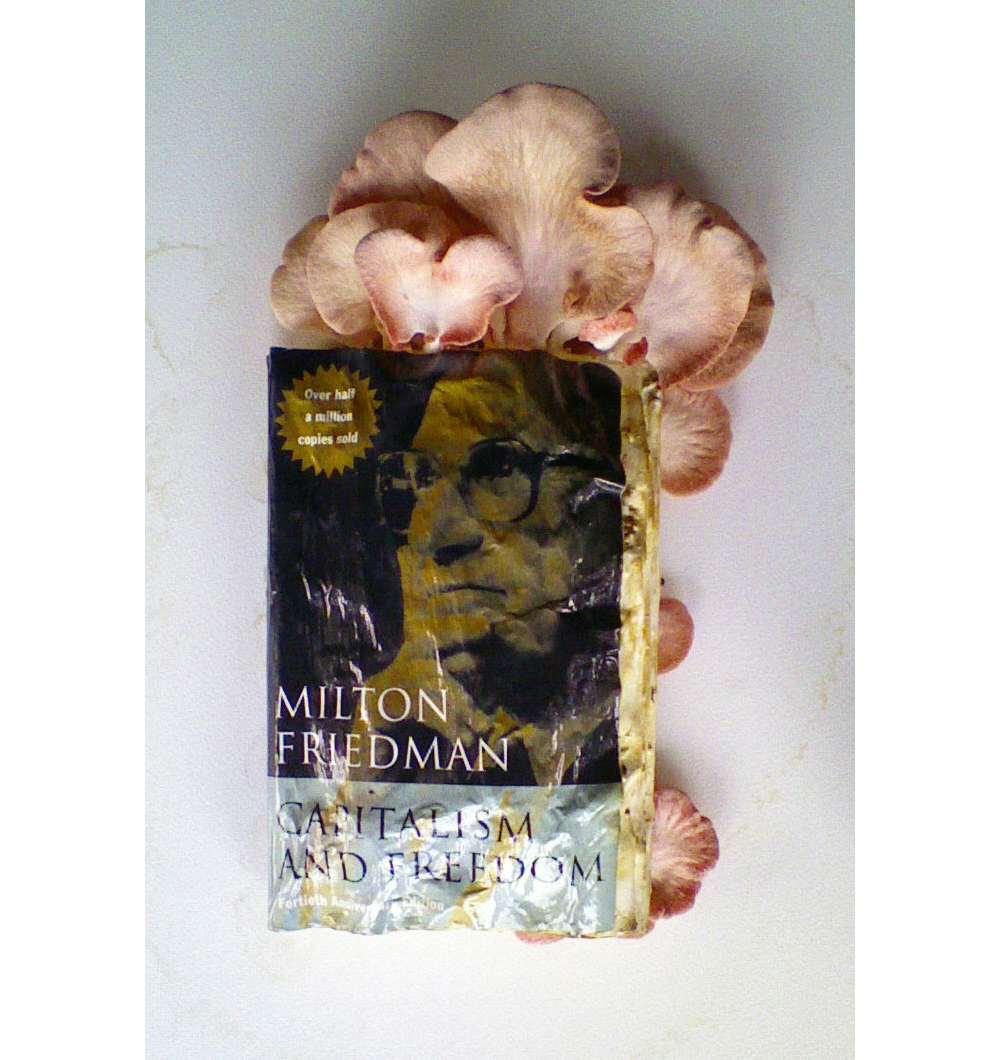

──あなたのアート活動において、エコロジカル・フットプリント(*5)を軽減するために行っている具体的なアクションがあれば教えてください。例えば、飛行機移動や梱包など。
2001年以降、飛行機の利用を大幅に減らしました。現在まで、飛行機で旅行したのは4回で、すべてに重要な理由がありました。しかし、それによって国際的な人脈作りや発表の機会は少なくなりましたね。ヨーロッパ各国には電車で行くことができますが、かえってお金も時間もかかってしまいます。飛行機の方が電車よりも断然安いというのが、現在のヨーロッパのクレイジーな状況の一部なのです。また、私は車を持っていませんし、野菜中心の食生活を送っています。
食材にも使うキノコはプラスチックの栽培袋で育てるのが一般的ですが、再利用が難しいため、再利用可能な容器で育てる方法を学んでいます(エノキダケを瓶で育てる方法は昔からありました)。
梱包材もできるだけ再利用していますし、インターネットを利用する際も再生可能な電力を使用している会社を経由させています。
また、私は作品に使用する素材として紙が大好きなのですが、紙の製造には大量の水を必要とするため、環境的に問題があります。ただ、紙の使用を完全にやめることはできないまでも、大幅に減らすことはできますし、紙と同様に私の作品制作における弱点だったプラスチック由来のラメが入ったグリッターも、いまは使用しなくなりました。
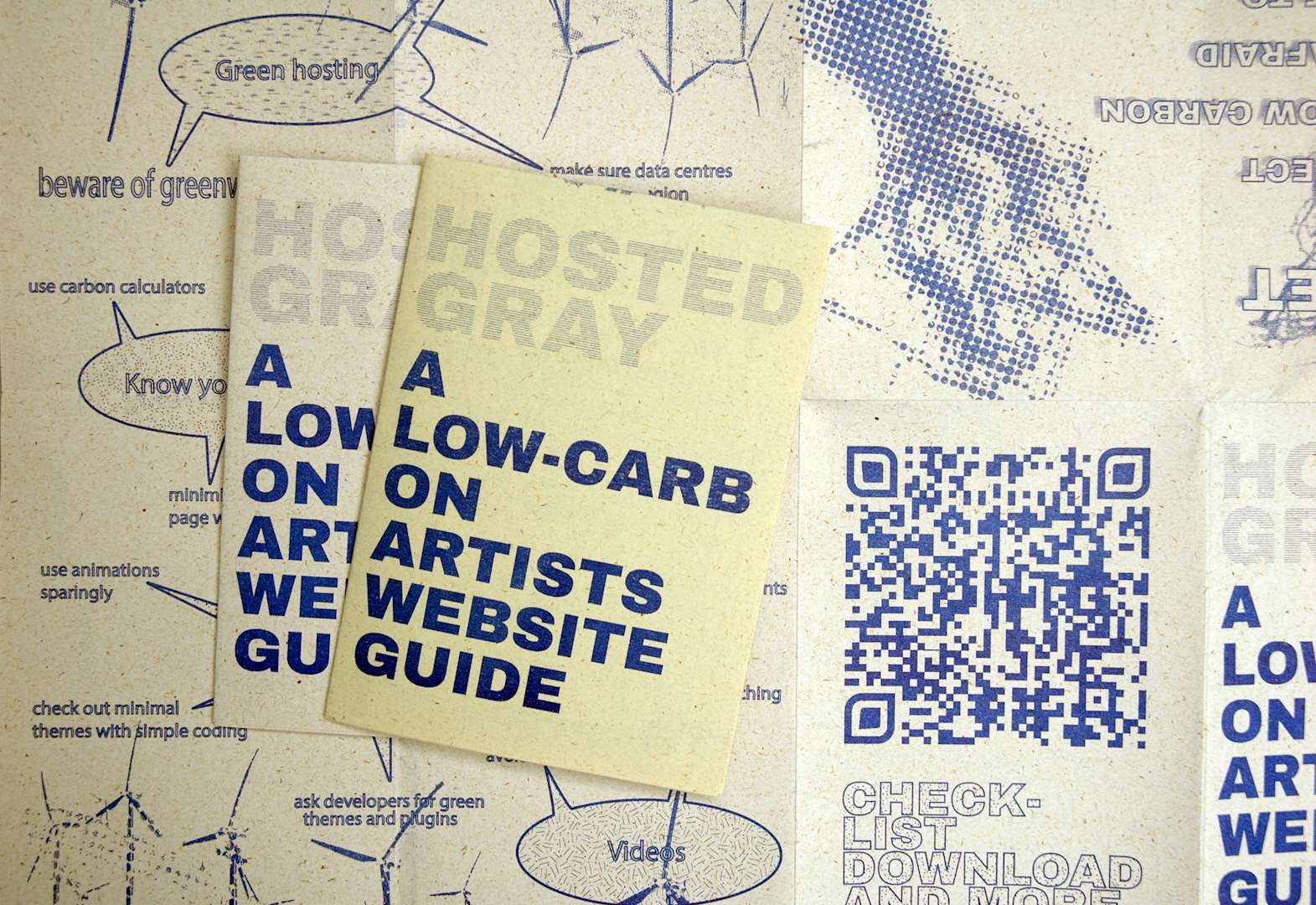
現在、ロンドン大学ゴールドスミス校のアート&エコロジー修士課程で学ぶ間に、自分自身の環境ポリシーを策定し、紙などの材料の使用量を定量化しようと思っています。私のカーボン・フットプリントの多くは移動で、電車移動は低炭素ですが、マンチェスターとロンドンを何度か往復すれば、やはり排出量はかさみます。
スウェーデンのルンド大学は、2017年に個人がカーボン・フットプリントを減らすためにできることについての研究(*6)を発表しました。その研究レポートによると、個人の生活のなかで、温室効果ガスの排出削減にもっとも影響力のある4つの行動とは、植物由来の食事、空の旅を減らす、車を持たない、(一家庭あたりの)出生数を減らす、でした。私には子供がいないので、乳製品とたまに魚を食べる弱点を除けば、それなりにうまくいっていると思います。同時に、気候変動は社会システムの問題であり、インフラのあり方や社会のあり方について、より大規模な変革が必要であることも忘れてはなりません。個々の行動だけでは十分ではありません。 たとえ私の二酸化炭素排出量が北半球に住む人々の平均より低かったとしても、南半球の人々の排出量よりは遥かに高いのですから。
(後編に続く)
参考資料
IEA グローバル・エネルギー・レビュー2021年のCO2排出量 https://www.iea.org/reports/global-energy-review-co2-emissions-in-2021-2
JOCMEC メジャー企業の2021年第2四半期決算 https://oilgas-info.jogmec.go.jp/info_reports/1008924/1009107.html
*1──先進国や新興国が地球温暖化対策への責任を果たし、すべての人々が暮らしと健全な生態系を持続可能にするための取り組みを行うという考え。
*2──2021年10月31日〜11月13日まで、英国スコットランドのグラスゴーで開催された、第26回国連気候変動会議。
*3──二酸化炭素、メタン、一酸化二窒素
*4──イギリスの文化評論家、マーク・フィッシャーが提唱した概念。現代社会では、自由や選択肢が重視される一方で、市場経済の制約によって実際には選択肢が限定されているという考え方であり、現代社会では、自由と選択の拡大と同時に、まだ経済的不平等や社会的排除が存在しているということが示唆されている。
*5──人間活動が与える環境負荷の大きさを表す指標
*6──“The four lifestyle choices that most reduce your carbon footprint” (LUND UNIVERSITY, 12 July 2017) https://www.lunduniversity.lu.se/article/four-lifestyle-choices-most-reduce-your-carbon-footprint
